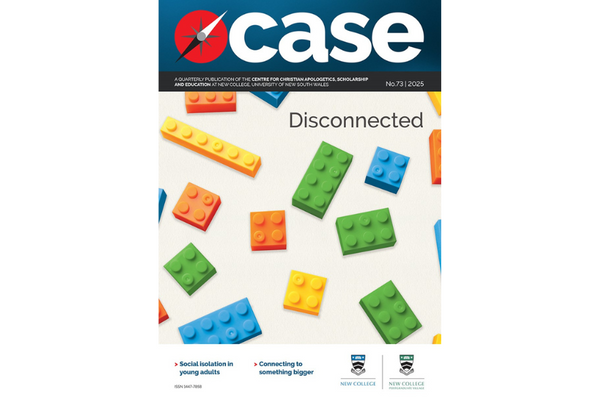Book Review: The Wife Drought

‘I had wife envy, and I had it bad.’
So begins Annabel Crabb’s The Wife Drought—a humorous and thought provoking book on the discrepancies that still exist between men and women in the workforce and the home. Before the fear in you rises to catastrophic levels about the impending feminist beat up, hear these words: ‘this is not a book of rage, on the whole. And—more importantly—it’s not just a book about women’ (p?).
Having won so much in the sphere of women and work, it is the thesis of this book that we must now turn our attention to men and family. This is a book about where we’re at, as a nation. What does life look like for the average nuclear family—men and women? Who works, and where do they work?
So much of our collective bargaining-with-societal-norms time has been spent on how to get women into the workforce that the other half of the equation has been forgotten. ‘If we are serious about equality, we should stop worrying so exclusively about women’s ease of access to the workplace and start worrying about men’s ease of egress from it’ (p?).
In the 21st century we sit at an important juncture. Women have unprecedented access to the workplace, and now outnumber men in tertiary education. All the talk of the last fifty years about enabling women to enter the workforce has yielded its fruit. In fact, as Crabb points out, the pay gap between Generation Y men and women is barely discernible.
As men and women get together, settle down, and start a family, things begin to twist a little out of shape. While the growth of women in the workforce has been somewhat of a success—consider we’ve had a female Prime Minister and a female Governor General—‘for many modern mothers, progress at work means the privilege of working herself into the ground in two places rather than one’ (p?).
Perhaps not surprisingly then, this mother-at-work phenomenon is still rare. The majority of nuclear families still adhere to the male-breadwinner model. In sixty per cent of families the dad works full-time and the mum doesn’t. Only three per cent of families have a mum who works full-time and a dad who doesn’t. Crabb does not argue that traditional family structures (male breadwinner, female housewife) are a problem, she only asks why we never question one half of the equation.
Crabb says, ‘everybody loses in a system like this’ (p?). The loss she refers to is a triple threat: women feel hard done by, men feel trapped at work, and children don’t see enough of their fathers.
Our social norms only serve to reify these patterns: generally, men are stuck at work, women at home, and we use our language to ensure that each stays put. We ask questions—the cheapest and most direct technique for dealing with things that are not quite right. For women, these include: ‘How do you do it? How can you do it? Where’s the baby?’ For men: ‘Aren’t you amazing? What are you doing here? When are you going back to work?’ (p?)
Crabb writes, ‘it’s okay to assume men are incompetent at domestic tasks, even if it would be quite offensive for the diametrically opposite assumption—that women are incompetent at work—to be vocalised in public’(p?).
The assumptions we hold about men and women and work are not bad per se, but there is nothing wrong with asking whether shaping our lives according to societal expectations is bearing the kind of fruit we want in our world. ‘Assumptions needn’t be set in stone,’ says Crabb.
‘If workplaces were equally accepting of men who take time out for family, there would be no reason for men to feel awkward about asking. And if men were as common as women on the playgroup circuit, then the assumption that raising children is women’s work would be less dominant’ (p?).
Stephanie Coontz—a feminist historian—in an article in the Atlantic wrote, ‘In some senses, men are where women were thirty years ago’. Reflecting on this, Crabb says, ‘thirty years ago, it was [for women], Yes, you can do other things, but you must not compromise your femininity in doing it; you still have to be attractive and sexy’ (p?).
‘Men are at the point where they’re beginning to discover that there are things beyond the old notion of masculinity that are rewarding. At the same time, they’re being told—and not just by society but by women who subscribe to these conflicting messages about masculinity—that they should be disclosing but not weak. Gentle, but still willing to kill a mouse. They’re getting these messages that somehow they have to live up to a norm of masculinity that includes all the old protective, provider roles, but also the new ones’ (p?).
This is not a Christian book. But perhaps even more than the secular world, the Christian community has well-defined roles for men and women. If, as Christians, we want to say that there is something essentially important in maintaining the entrenched gender roles (male breadwinner, female housewife), then the question Crabb asks us is ‘Why?’
Modern gender theory separates biological sex difference from gender constructs. That is to say, in modern gender theory there is such a thing as a male body and a female body, but our understandings of what it means to be male or female are up for discussion. Gender is a construct, an idea, overlaid on to basic sex difference.
Christians, on the other hand, have tended to weave these two things together. It is not enough to simply note that God created male and female (Gen 1:27). These male and female bodies are then infused with meaning. There are ideas about what it means to be a man or a woman, and these ideas exist because of biblical passages. The woman is the helper for the man (Gen 2:18). Christians uphold cultural expressions of gender difference out of respect for the sex difference God created.
However, when we ourselves have so connected sex difference and gender constructs, families who flout our male and female gender constructs appear to threaten our belief in the essential sex difference between man and woman. But this is not actually what this conversation is about. Crabb is not actually questioning sex difference, but specific gender constructs. She is suggesting that what it looks like to be a man or a woman at work and at home is more fluid than what many are used to in the Christian community.
If we want to critique the book on the basis of it having a narrow definition of family, we must first recognise that it is unapologetically a book about nuclear families—one man, one woman, a commitment to one another, and some kids. Crabb is searching for patterns, well-worn perhaps, but still seemingly unspoken within the traditional family structure. She is not ignorant of the fact that there are many other types of family units in society, she is simply narrowing her field of enquiry to the traditional man/woman marriage relationship.
Her writing style and tone make this book easy to read, and Crabb’s wit and humour will alternately leave you in tears at just how recently women were forced to resign from employment upon marriage, and peals of laughter as she recounts her own trials as a working mother.
While our national conversation swirls around men and women and who wins and loses at work, it rarely connects this with what is happening in the homes of those same people. This book is the beginning of the next conversation we need to have.
‘Perhaps,’ as Annabel Crabb says, ‘it’s men’s turn now to change’ (p?).
Leave a comment
Comments will be approved before showing up.



